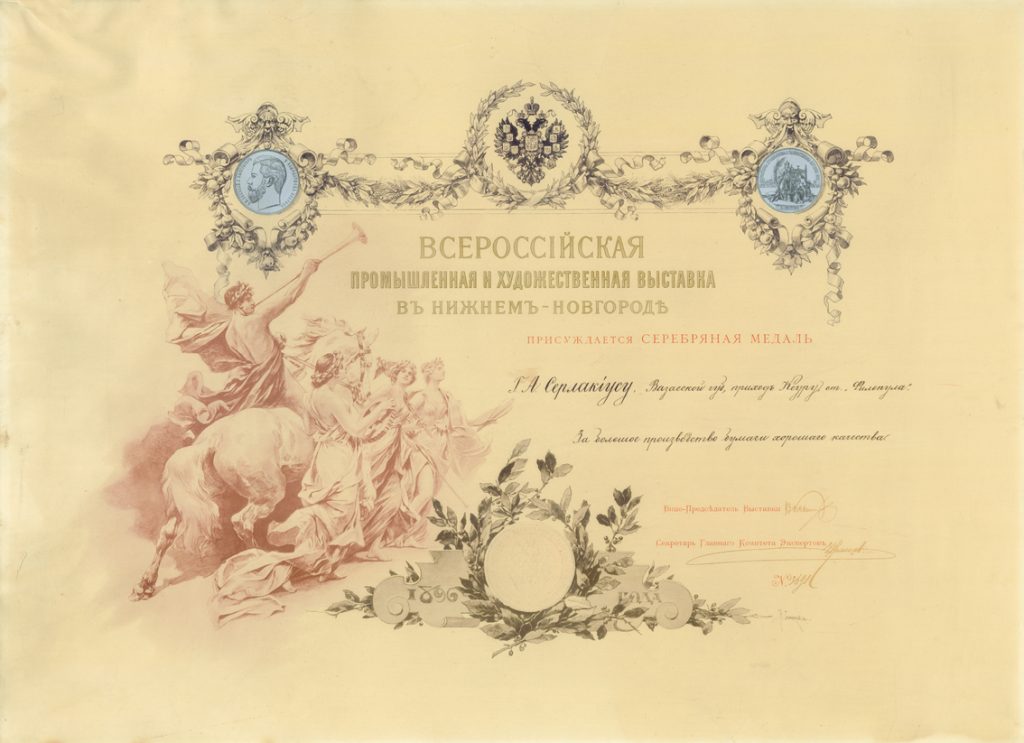Certificate of Honour
09.12.2019
Certificate of honour from the All-Russia Art and Industry Exhibition, 1896
After founding his wood-pulp mill on the banks of Mäntänkoski Rapids in 1868, Gustaf Adolf Serlachius was in constant debt as he struggled to develop his mill and ensure proper transportation conditions.
Market demand was high, and the wood pulp that the mill produced was of good quality – so good, in fact, that it was able to receive a medal at the Vienna World Exposition in 1873. The problem was that some of the product always perished during the difficult journey to its destination: to reach the primary market area, St. Petersburg, the wood-pulp bales had to be transported first by boat, then by horse-drawn carriages, by ship, and finally by train.
As cellulose and paper factories began to crop up alongside wood-pulp mills in Finland, Serlachius also dreamed of founding his own paper factory. So, with his financial situation gradually improving, he built a paper factory to the west of the wood-pulp mill.
In 1890, a fire badly destroyed the factory, but with new machinery, it was restored to excellent condition. As a result, G. A. Serlachius became the biggest supplier of brown paper on the Russian market. The product range included a variety of cellulose- and wood-pulp-based wrapping papers and even some silk paper. The paper he manufactured was of high quality. The certificate of honour which is part of the Arts Foundation’s collection proves that: Serlachius’s paper received the second prize at the All-Russia Art and Industry Exhibition, held in Nizhniy-Novgorod in 1896.
Tarja Haikara
Planning Officer


